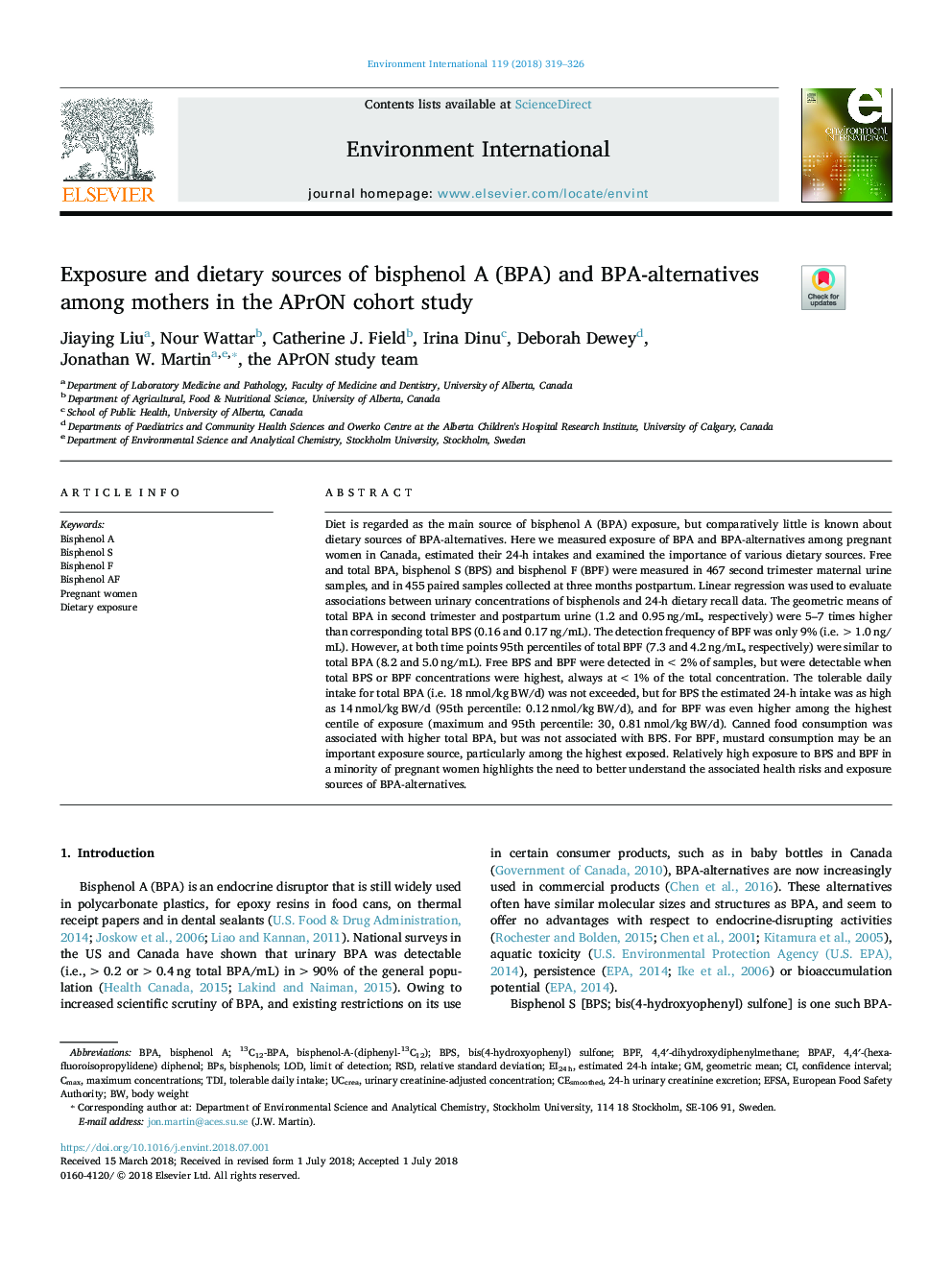| کد مقاله | کد نشریه | سال انتشار | مقاله انگلیسی | نسخه تمام متن |
|---|---|---|---|---|
| 8855129 | 1619011 | 2018 | 8 صفحه PDF | دانلود رایگان |
عنوان انگلیسی مقاله ISI
Exposure and dietary sources of bisphenol A (BPA) and BPA-alternatives among mothers in the APrON cohort study
دانلود مقاله + سفارش ترجمه
دانلود مقاله ISI انگلیسی
رایگان برای ایرانیان
کلمات کلیدی
BPABPFCmaxBPSRSDBPAFTDIEFSAEuropean Food Safety Authority - اداره ایمنی اروپاrelative standard deviation - انحراف استاندارد نسبیBisphenols - بیسفنولBisphenol AF - بیسفنول AFBisphenol F - بیسفنول Fbisphenol S - بیسفنول SBisphenol A - بیسفنول ای، بیسفنول ALOD یا Limit of detection - حد تشخیصPregnant women - زن باردارconfidence interval - فاصله اطمینانDietary exposure - قرار گرفتن در معرض غذاlimit of detection - محدودیت تشخیصTolerable daily intake - مصرف روزانه قابل تحملGeometric mean - میانگین هندسیbody weight - وزن بدن
موضوعات مرتبط
علوم زیستی و بیوفناوری
علوم محیط زیست
شیمی زیست محیطی
پیش نمایش صفحه اول مقاله

چکیده انگلیسی
Diet is regarded as the main source of bisphenol A (BPA) exposure, but comparatively little is known about dietary sources of BPA-alternatives. Here we measured exposure of BPA and BPA-alternatives among pregnant women in Canada, estimated their 24-h intakes and examined the importance of various dietary sources. Free and total BPA, bisphenol S (BPS) and bisphenol F (BPF) were measured in 467 second trimester maternal urine samples, and in 455 paired samples collected at three months postpartum. Linear regression was used to evaluate associations between urinary concentrations of bisphenols and 24-h dietary recall data. The geometric means of total BPA in second trimester and postpartum urine (1.2 and 0.95â¯ng/mL, respectively) were 5-7 times higher than corresponding total BPS (0.16 and 0.17â¯ng/mL). The detection frequency of BPF was only 9% (i.e. >1.0â¯ng/mL). However, at both time points 95th percentiles of total BPF (7.3 and 4.2â¯ng/mL, respectively) were similar to total BPA (8.2 and 5.0â¯ng/mL). Free BPS and BPF were detected in <2% of samples, but were detectable when total BPS or BPF concentrations were highest, always at <1% of the total concentration. The tolerable daily intake for total BPA (i.e. 18â¯nmol/kgâ¯BW/d) was not exceeded, but for BPS the estimated 24-h intake was as high as 14â¯nmol/kgâ¯BW/d (95th percentile: 0.12â¯nmol/kgâ¯BW/d), and for BPF was even higher among the highest centile of exposure (maximum and 95th percentile: 30, 0.81â¯nmol/kgâ¯BW/d). Canned food consumption was associated with higher total BPA, but was not associated with BPS. For BPF, mustard consumption may be an important exposure source, particularly among the highest exposed. Relatively high exposure to BPS and BPF in a minority of pregnant women highlights the need to better understand the associated health risks and exposure sources of BPA-alternatives.
ناشر
Database: Elsevier - ScienceDirect (ساینس دایرکت)
Journal: Environment International - Volume 119, October 2018, Pages 319-326
Journal: Environment International - Volume 119, October 2018, Pages 319-326
نویسندگان
Jiaying Liu, Nour Wattar, Catherine J. Field, Irina Dinu, Deborah Dewey, Jonathan W. Martin, the APrON study team the APrON study team,